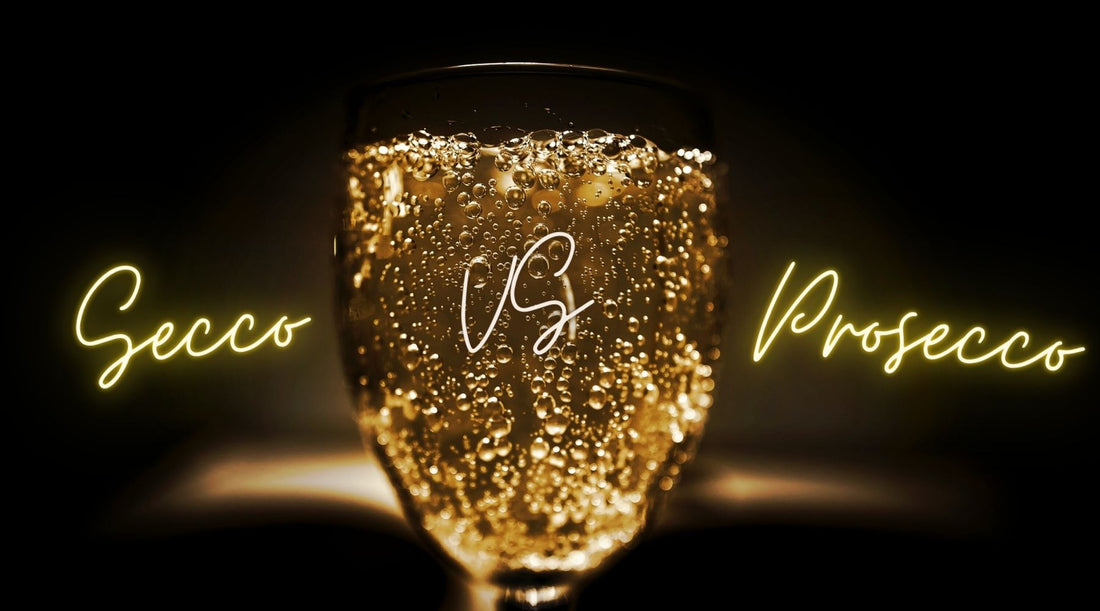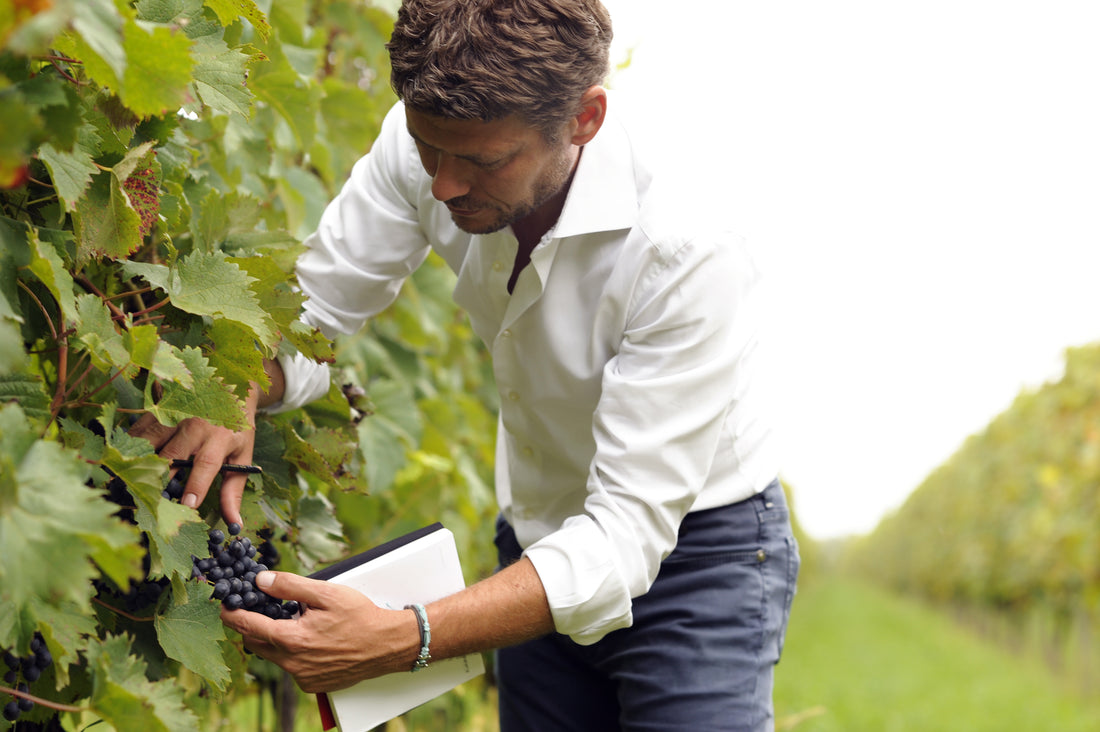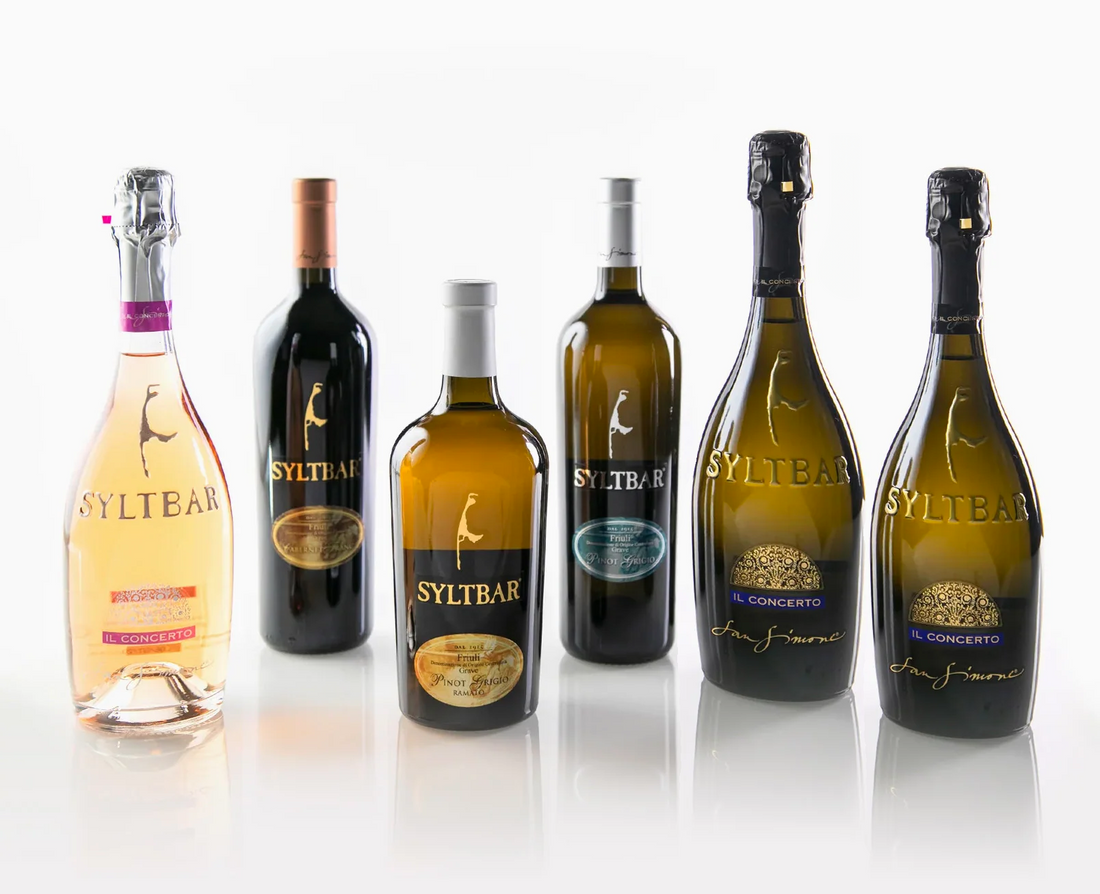Prosecco is a term we use here at SYLTBAR very regularly. It’s part of our everyday conversation, just the way we always love to include Mr SYLTBAR Premium Prosecco as part of our everyday lives.
If you are a fan of SYLTBAR, we know that you also use this word regularly, because we know you love Mr SYLTBAR too... but secco? You might not be as familiar with this term, or maybe you have heard it, and just assumed it was an alternative label, a nickname or shortened version of the word, Prosecco. Although sometimes people naively used the terms interchangeably, these two types of sparkling wine are not the same.
Is Secco and Prosecco the same?
Let us break down the differences for you in an easy-to-understand manner.
The most important thing to remember is that Prosecco is not simply a grape distinction. It refers to the name of the region in Italy where it is made. A sparkling wine that bears the name Prosecco can only come from this specific part of Italy. If it’s not produced here, it is not a true Prosecco. This region is known as Fruili. This is where all of the SYLTBAR wines come from, and where our beautiful family-owned-and-operated vineyard, San Simone Winery, is located.
What is a Prosecco
The legal wine production guidelines for Prosecco strictly say that for it to be called a Prosecco, it must come from that specific region, and must be exclusively made from the Glera grape. The Glera grape was formerly known as the Prosecco grape, but was renamed in 2009 in order to allow for the term “Prosecco” to be used as the name for a geographically-protected wine.
Our Premium Prosecco is made from 100% Glera grape, in Fruili, Italy. The Glera grape can also be found in the Veneto region — but again, these are the only regions where the grapes can be used to produce a true Prosecco. Even if the Glera grape is exported somewhere else to grow, harvest and produce wines, those wines cannot legally be considered a real Prosecco since they were used outside of the Fruili and/or Veneto regions of Northern Italy. There is an actual town named Prosecco too, located in this area.
Proseccos can be fully sparkling, semi-sparkling (often seen called Frizzante Prosecco), or even still. Mr SYLTBAR is a fully sparkling Prosecco with crisp, fresh and well-balanced bubbles, and notes of pear, white peach, golden apple and lemon. And we can’t forget the best part: it’s only 49 calories per 6 ounce glass!
Now that we’ve covered all the bases about Prosecco, let’s talk about this Secco wine.
What is a Secco Wine?
Secco typically refers to a German wine that is semi-sparkling, and uses its own carbon dioxide to give it that bubbling sparkling essence. It’s different from a German sekt, which is high bubbly, fully sparkling wine. Secco is a lighter sparkling wine with a slightly lower alcohol content than other typical Proseccos and Champagnes, which are around 11.5% and 12.5% respectively.
This term “secco” is not legally protected in the same way that Prosecco is. A Secco wine does not have to come from a specific region in order to be given that name, or even be produced by specific grapes. Another interesting point about Secco semi-sparkling wines in Germany is that there is no tax burden as there is with champagne and Prosecco. These sparkling wines incur an additional tax, but semi-sparkling and frizzante wines do not.
Is Secco a canned Prosecco?
Another big difference between Prosecco and Secco is its distinctive containers. As we taught you in an earlier blog post, Prosecco can only be sold in glass. It cannot be sold in cans. Secco, on the other hand, is allowed to be sold in cans.
The term “secco” actually does refer to a dry product in Italian, which would mean that the wine has much less than 10 grams of residual sugar per liter. However, the term Secco when used to describe a semi-sparkling wine has a different regulation for its sugar levels. A wine labeled as frizzante or secco can have up to 35 grams of residual sugar per liter. A sparkling wine with this amount of residual sugar would be categorized as “semi-dry.” Although this term might lead you to believe it’s a dryer style wine, there is still a noticeable sweetness to it, and clearly much more residual sugar than there should be in a dry wine.
When you are looking for a true Prosecco, SYLTBAR will always have your back. Our Premium Prosecco is all natural, vegan, organic, and incredibly low in sulfites, sugar and calories. There is no better place to look for Prosecco than SYLTBAR. Shop online, or use our locator to find a restaurant or retailer in your area that carries our wines.







